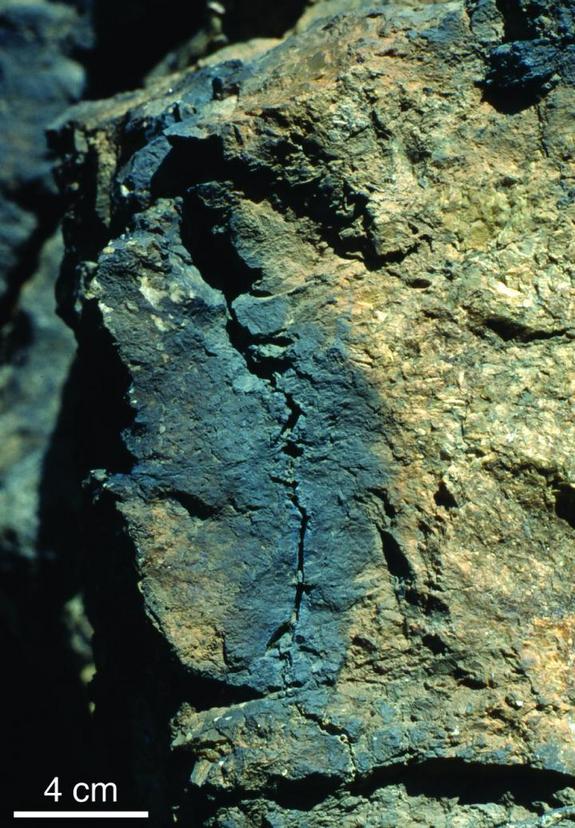At www.livescience.com/51789-lightning-warps-rocks-atoms.html … the researchers that found lightning was capable of altering rocks went to great trouble, slicing a sample to produce a sliver to view under the microscope. The rock, from southern France, looked like it had a wet dark algae that had formed in a crevice of a jagged feature in granite
 They took a thin slice and looked at it under the microscope and noticed the black fulgarite was in fact glossy – comparing it to a ceramic glaze on pottery. The fulgarite was also porous – as holey as foam. The researchers blame this on lightning that vapourised the rock surface. They also detected elevated concentrations of sulphur dioxide and phosphorous peroxide as a result, it is thought, of lichen on the rock surface ebing brunt to a crisp. Just beneath the fulgarite layer they found the shock lamellae – which indicates lightning penetrated inside the rock. In this instance, not very far inside – but this was probably your everyday lightning and nothing spectacular.
They took a thin slice and looked at it under the microscope and noticed the black fulgarite was in fact glossy – comparing it to a ceramic glaze on pottery. The fulgarite was also porous – as holey as foam. The researchers blame this on lightning that vapourised the rock surface. They also detected elevated concentrations of sulphur dioxide and phosphorous peroxide as a result, it is thought, of lichen on the rock surface ebing brunt to a crisp. Just beneath the fulgarite layer they found the shock lamellae – which indicates lightning penetrated inside the rock. In this instance, not very far inside – but this was probably your everyday lightning and nothing spectacular.
They also compared the lightning strike with other rocks, such as those affected by meteorite impacts, and noted various similarities. It then goes on to say that once you realise lightning can alter rock surfaces you start to find these altered surfaces all over the place – particularly on mountain sides and tops. It is one of those things that go a long time unnoticed (by scientists) and then it becomes as common as muck (all over the place).
